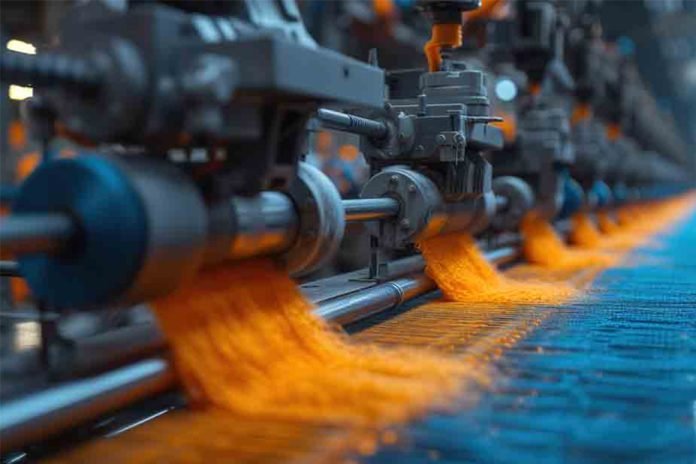Bangladesh is already world’s second largest source for apparel items after China, but to attain the top spot it has to add adding value-added products to its export basket. Increasing use of clothes made of manmade fibre (MMF) is essential in this regard.
The highly value-added apparel items made from MMF have significant demand abroad. Non-cotton apparel fetches higher prices than cottonwear for being more flexible, durable and functional, with the cost of a T-shirt made from MMF being about double that of one made from cotton.
Realizing this local garment makers have been diversifying their product base with non-cotton items. Additionally, they have increased their production capacities, maintained consistency in supply and improved product quality over the past five decades.
Currently about 7.9 percent of all apparel items sold worldwide come from Bangladesh as the country has turned into a reliable source for international clothing retailers and brands. With about 29 percent of the country’s garment exports comprising MMF products, Bangladesh aims to use this segment to expand its global market share to 12 percent by 2030.
Bangladesh Garment Manufacturers and Exporters Association (BGMEA) has already announced its aim to increase the country’s annual apparel exports to $100 billion by 2030. To achieve this target local exporters have been exploring markets for MMF products and increasing their value addition.
Value addition in the country’s export-oriented garment items currently stands at about 71 percent, as per data of Bangladesh Bank. Exporters attribute the growing volume of MMF apparel shipments for the increased value addition in export-oriented garment items. This is because the MMF segment accounts for a bulk of the export receipts from highly value-added garments, with some producers even exporting MMF jackets worth $100 per piece.
The share of MMF in global fibre production has increased to 78 percent over the past five years, according to a study, styled “Beyond Cotton – A Strategic Blueprint for Fiber Diversification in Bangladesh Apparel Industry”, released in March this year.
Of the total non-cotton fibre production, about 39 percent is composed of polyester filament yarn while polyester staple fibre makes up 15 percent, the study shows. Although the production of nylon filament yarn and viscose staple fibre has increased, they each account for just 5 percent of the global output.
The global production of acrylic staple fibre declined from 1.7 percent in 2017 to 1.4 percent in 2022. Meanwhile, wool and silk have a negligible global production share of 1 percent and 0.1 percent respectively.
Volume-wise, the trade of both cotton and non-cotton fibres has increased at a rate of about 1 percent annually from 2018 to 2022. During this five-year period, global trade of polyester fibre fell by a compound annual growth rate of 3 percent while polyester yarn and fabric saw increases of 1 percent and 2 percent respectively.
To allay workplace safety and sustainability fear Bangladesh has 217 LEED certified green garment units, of which 83 are platinum rated, 120 are gold, 10 are silver and four are just certified by the US Green Building Council. It was only after these investments were made that the capacities of local garment makers reached such a level that they could diversify their product base with more value-added items and include non-cotton products.
Currently, non-cotton apparel is the largest and fastest growing category of garment exports, contributing 50 percent of all shipments from leading sources such as China, Vietnam and Italy.
The concentration of cotton apparel exports compared to non-cotton is higher in cotton producing countries like India and Turkey. However, Bangladesh accounts for a high share of global cotton apparel exports even though cotton production in the country is negligible at best.
China is the largest exporter of non-cotton apparels with a market share of 36 percent while India contributes 2 percent and Bangladesh provides 1 percent. China’s share is declining as it was 56 percent just a few years ago while India is also seeing reduced non-cotton apparel exports. The situation is reversed in Bangladesh as the country’s share in the global non-cotton apparel trade used to be even less than 1 percent, the study shows.
The data also shows that MMF imports recently increased, indicating that local garment manufacturers are expanding their product base. Exporters have urged the government for a 10 percent incentive on exports of MMF garments to encourage production and thereby help grab a bigger share of the global non-cotton apparel market.
The drawback in this regard is that MMF or synthetic fibres are engineered through a complex chemical process rather than being manufactured from natural sources. In essence, these fibres are mainly made from polymers derived from petrochemicals. While the fossil-fuel-derived fibres are not conflict materials, they are products of an industry with a heavy social impact. MMF are not biodegradable and have been contributing to environmental pollution as washing non-cotton clothes releases microplastics.



